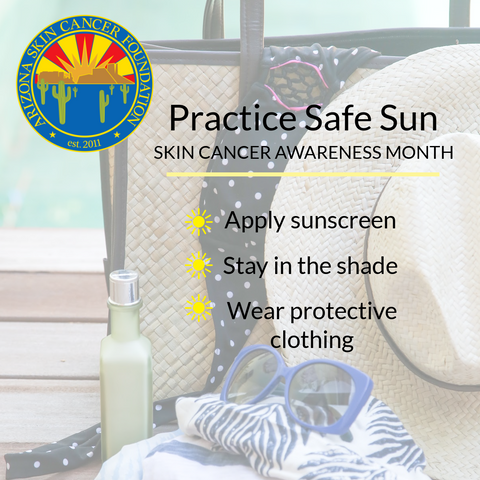Skin Cancer Awareness Month Part 1: Three Main Types of Skin Cancers
May 2, 2022
Often when one thinks of skin cancer they think the worst: the life-threatening malignant melanoma. Fortunately, the majority of skin cancers are not life-threatening but depending on size, location and depth, they can cause disfigurement and local skin destruction. Regardless, you don’t want any type of skin cancer anywhere on the body ever. This first series we discuss the most common skin cancers.
- Basal Cell Carcinomas (BCC): most common, least life-threatening.
There are approximately 3.6 million BCCs diagnosed annually; the most common carcinomas in humans. They are caused from intense ultraviolet B radiation, known as the burning ray. Areas most affected are the head and neck, especially on or around the nose and can occur on the back or chest. Rarely life-threatening however, they can cause local skin destruction and may cause disfigurement.
They appear as a small pearly bump with fine blood vessels or may present with a central ulceration that tends to bleed. There are different types of BCCs and the most aggressive is a morpheaform BCC; this has a scar-like appearance and does not bleed unless advanced.

Thanks to DermNZ.org for this nodular BCC photo.
Think about all those times you had a sunburn on your nose, face or back. If this is you and you're over 40 be aware of any new changing persistent lesions. A common complaint from patients is, "I have this pimple on my face for 6 months that hasn't healed".
2. Squamous Cell Carcinomas: second most common, can be life-threatening.
Per the Skin Cancer Foundation, there are approximately 1.8 million SCCs diagnosed annually in the US. They are caused from ultraviolet A radiation which also leads to brown spots, thin and fragile skin. These lesions usually start out as scaly textured patches called actinic keratosis (AK), the precursor to SCCs. AKs can progress to elevated bumps or thickened scaly patches or plaques that don’t heal, indicative of thickened AKs or an SCCs: a biospy is warranted to identify.
Thanks to Parks Dermatology in Ormond Beach, FL for photo of AK.

Thanks to DermNZ.org for this SCC photo.
Sometimes they will take on a mini volcano-like appearance and can grow rapidly. SCCs usually occur on the chronically sun-exposed areas like the head and neck, ears, arms and hands. The metastasis rate is low, however the risk increases with SCCs on the ears, lip and scalp and if one is immunocompromised.
If you feel any rough patches, I describe as 80 - 120 grit sandpaper feel, see your dermatologist, these may be AKs and they can progress to SCCs.
3. Melanomas: least common, most life-threatening.
Annually in the US there are approximately 197,000 melanomas diagnosed, almost half are diagnosed earlier enough, and if treated, have a survival rate of 99%. For those melanomas that are invasive, the greater the depth the lower the survival rates; approximately 7.7% of those with invasive melanomas will die from melanomas, most being men versus women. However, women under the age of 49 get more melanomas than men and men over 50 get more melanomas than women. Although, the Caucasian population has a higher risk for developing melanoma and one’s risk doubles if they’ve had more than 5 sunburns or a history of 1 blistering sunburn, those with skin of color can get melanomas but have a lower risk.
Melanomas can occur anywhere on the body and with age they tend to be on sun exposed areas. Melanomas are usually are dark irregular moles that continue to change either in size or elevation. The ABCDE mnemonic is often used: A - asymmetry, B - irregular border, C - color change, D - diameter, E - evolving.

Thanks to DermNZ.org for this superficial spreading melanoma photo.

Thanks to Medical News Today for photo of melanoma on the neck.
Several studies show that most melanomas are caused from intense and chronic sun exposure. Seventy to eighty percent of melanomas occur on normal skin and 20-30% occur in existing moles.
As a dermatology clinician and outdoor enthusiast living in Tucson Arizona, I strongly recommend wearing light-weight physical sun protective clothing and/or SPF 30+ sunscreen regularly. Golfers, tennis and pickleball players may reduce their risk from skin cancers by wearing wide brim hats/visors, long sleeve shirts, pants, our PalmFree SunGloves, Solapa and NeckBlock accessories.
For the May, Skin Cancer Awareness month we are donating $1 per order to the Arizona Skin Cancer Foundation.






